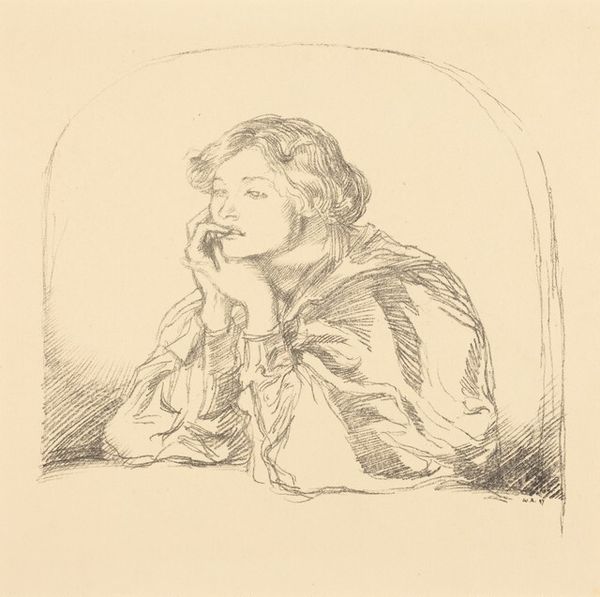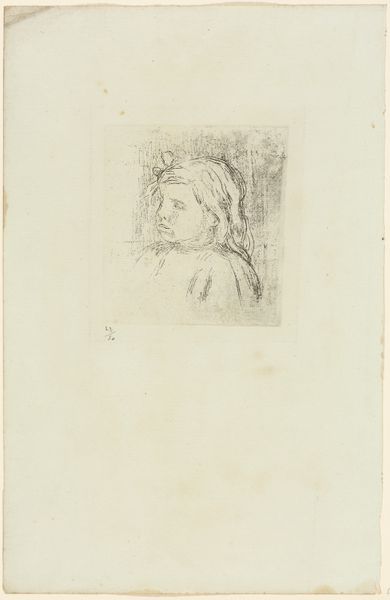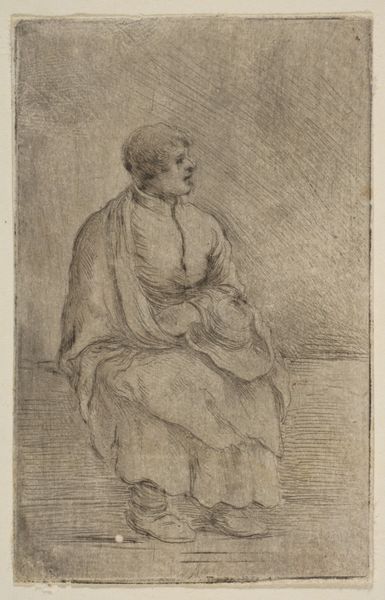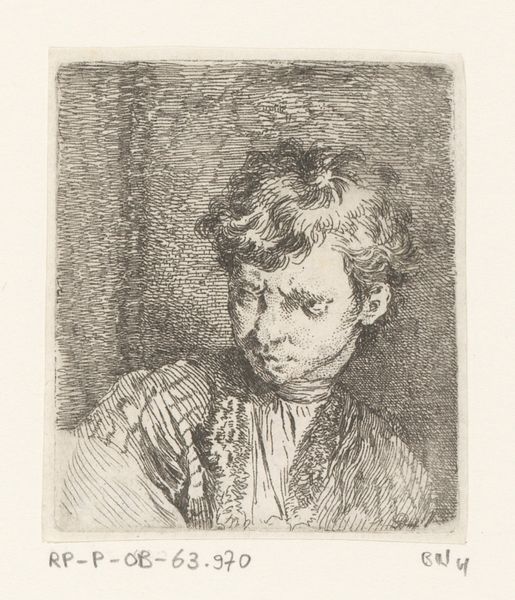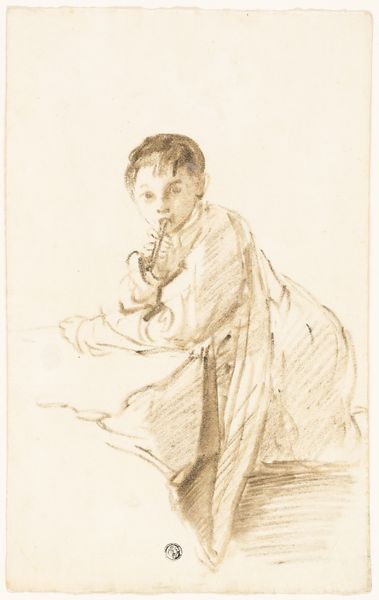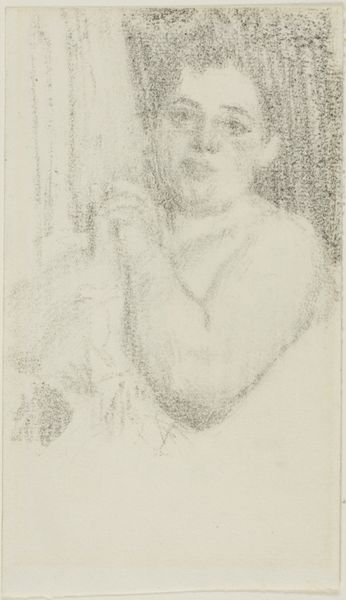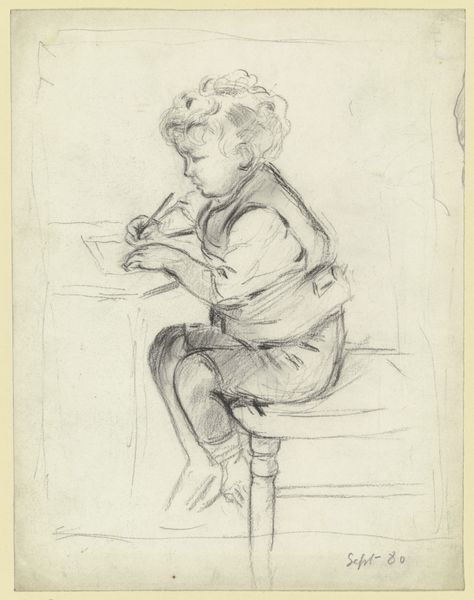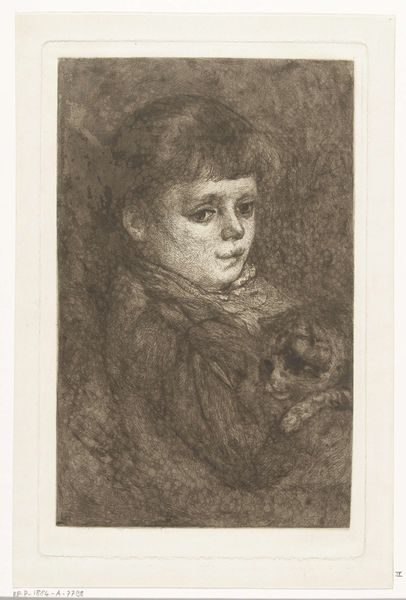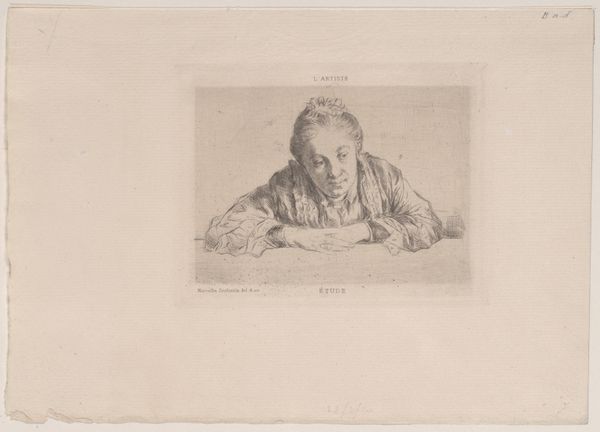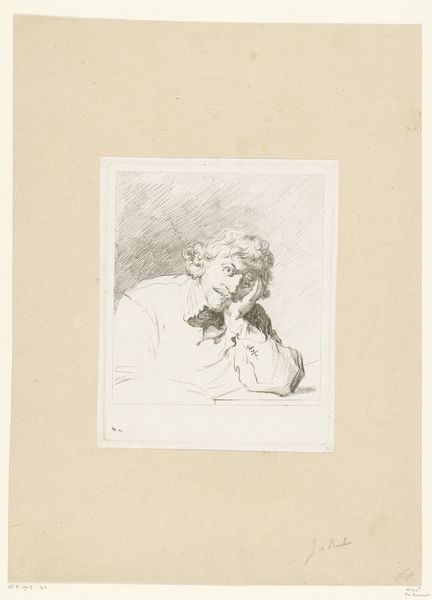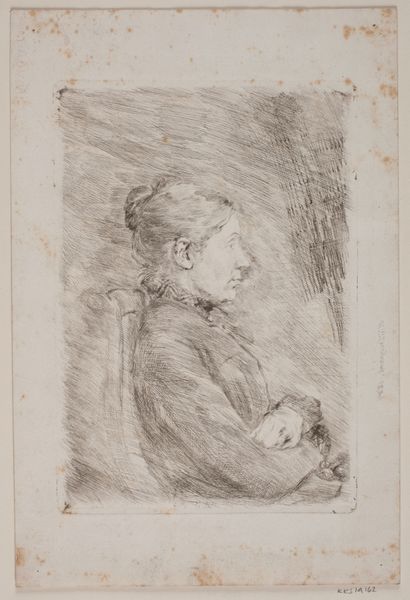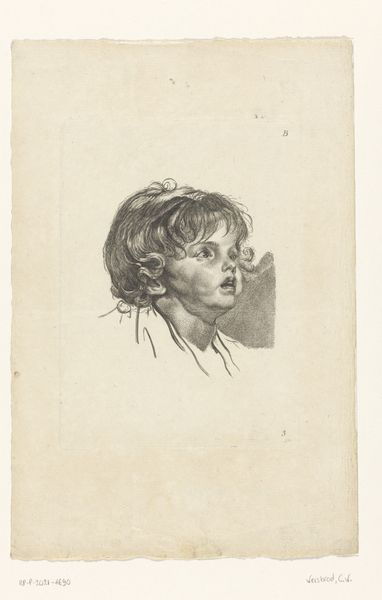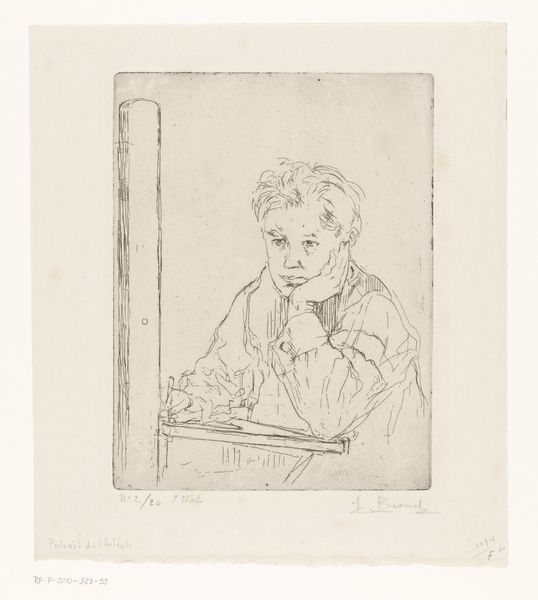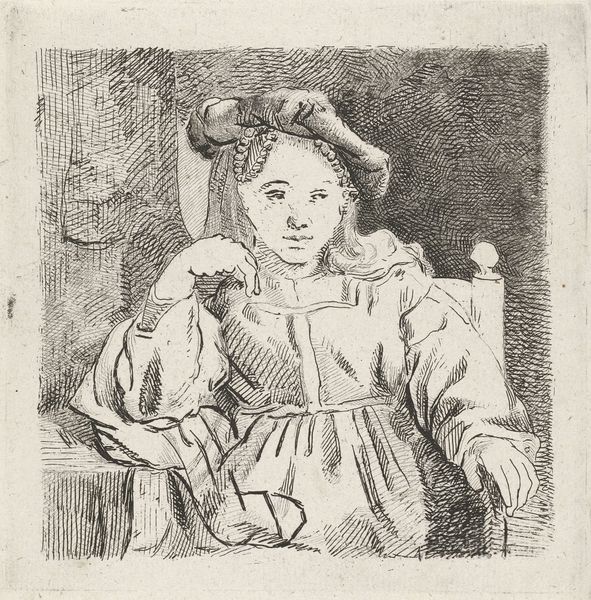
Dimensions: 158 × 121 mm (image/plate); 360 × 275 mm (sheet)
Copyright: Public Domain
Editor: This is Anders Zorn’s "Kesti, a Mora Peasant," an etching from 1906. I find the subject's direct gaze captivating, but her posture suggests contemplation... or perhaps weariness? What do you see in this piece? Curator: I see layers of cultural memory embedded in this deceptively simple portrait. The "Mora Peasant" isn't just a figure; it's a deliberate invocation of a specific Swedish identity, tied to the region of Dalarna and its history of independence and tradition. Zorn is drawing on—literally and figuratively—the symbolic weight of the Swedish peasant, a figure that represents authenticity and connection to the land. Editor: So, the etching technique itself—the precise lines—also adds to the symbolism? Curator: Absolutely! The medium reinforces the message. Etching, with its precise lines and capacity for reproduction, allowed Zorn to disseminate this idealized image of Swedish peasantry widely. Think about it: why did Zorn choose this woman? What qualities did she embody that resonated with him and, presumably, his audience? What meaning could be in that hand gesture of thinking? Editor: I suppose it's a very different message than, say, painting her in oil, which might suggest wealth and status. Etching feels…more accessible? Curator: Precisely! It democratizes the image, making it available to a broader audience while simultaneously reinforcing the idea of an "authentic" Swedish identity rooted in the simplicity of rural life. Is it "real?" Or is it the feeling or idea of "Swedishness?" Editor: That makes me think about how we construct these national identities, even now. It's all a performance, in a way. Curator: Indeed. And Zorn, through this carefully constructed image, is both participating in and commenting on that performance. Editor: It's amazing how much is packed into such a seemingly simple portrait. I hadn't considered all those layers. Curator: These symbols often work subconsciously, shaping our perceptions and reinforcing cultural narratives. Examining them closely, as we've done today, is crucial to understanding the art's enduring power.
Comments
No comments
Be the first to comment and join the conversation on the ultimate creative platform.
